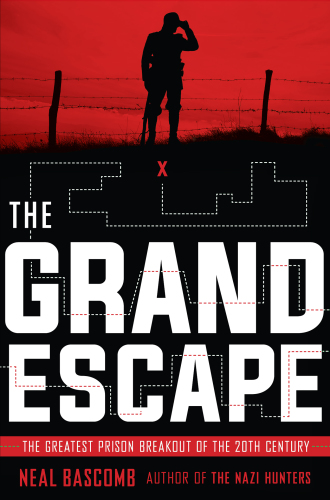
The Grand Escape
The Greatest Prison Breakout of the 20th Century
فرمت کتاب
ebook
تاریخ انتشار
2018
Lexile Score
1070
Reading Level
6-9
ATOS
7.8
Interest Level
9-12(UG)
نویسنده
Neal Bascombناشر
Scholastic Inc.شابک
9781338140354
کتاب های مرتبط
- اطلاعات
- نقد و بررسی
- دیدگاه کاربران
نقد و بررسی

September 1, 2018
Gr 8 Up-Bascomb presents the horrid conditions that prisoners of war at the notorious German prison camp Holzminden, run by the brutal Karl Niemeyer, experienced during World War I-and the band of men who were determined to break free. Their goal: to never get caught and do whatever it takes. They proved successful by digging a tunnel from this fortress prison through the foundation and out to freedom. The author carefully explains their extensive plans, bolstered by images and maps, and focuses on the science of the escape (milk used as invisible ink, makeshift bellows to provide fresh air into the tunnel) and how the men defied recapture. It is a tale of triumph that became a template for future prisoners of war, and Bascomb's heavy, well-cited research provides the information readers need. The dozens of names and intricate details occasionally slow down the narrative a bit, though the subject matter alone is compelling. VERDICT A fantastic pick for avid history readers.-Alicia Abdul, Albany High School, NY
Copyright 2018 School Library Journal, LLC Used with permission.

Starred review from July 1, 2018
Allied prisoners of war stage a series of intrepid escapes from German captors in this young readers' version of a true story from World War I.Established to hold captured Allied officers with histories of escape attempts, the camp at Holzminden, a "land-locked Alcatraz," was 150 miles from the Dutch border and bristling with guards. Many of the inmates, though, were stimulated rather than discouraged by these obstacles and, from its foundation, made tries at freedom--most notably on the night of July 23, 1918, when 29 men crawled out through a narrow tunnel dug over the previous months. Only 10 eluded the ensuing manhunt, but the exploit made headlines in Great Britain and was, Bascomb (The Escape Artists, 2018, etc.) claims, "the greatest escape of the Great War." Along with introducing a cast of colorful characters like RAF Lt. Harold Medlicott, "Britain's answer to Harry Houdini," who had already broken out of nine other camps, the author presents a picture of camp life as an oddly civilized affair in which the prisoners were so well-supplied from home that in the war's immediate aftermath local residents came to them for food. The tales of the digging of the cramped tunnel and of the escape itself make suspenseful reading, enhanced by diagrams and photographs.A fine escapade related with proper drama and likely to be news even to well-read young historians. (maps, sources, bibliography, index) (Nonfiction. 12-15)
COPYRIGHT(2018) Kirkus Reviews, ALL RIGHTS RESERVED.

Starred review from October 1, 2018
Grades 7-10 *Starred Review* It is estimated that during WWI there were some 192,848 British and Empire POWs held in Germany. Here Bascomb recounts some of their stories of prison camp life, escape, recapture, and escape again. The most talented and persistent of these escape artists were sent to the Holzminden camp under the command of the vile Karl Niemeyer. Spurred on, perhaps in part, by his depredations, a core group of POWs determined to escape by tunneling out of the camp. Ultimately their nine-foot-deep tunnel extended more than 60 feet and offered escape to 29 POWs. But this was only the first part of their quest for freedom. They still had to traverse 150 miles across enemy territory to Holland and freedom. Bascomb does an extraordinary job of bringing the principal escapees to life, especially the father of the tunnel, David Gray, and his two companions, Cecil Blain and Caspar Kennard. His account of the Herculean task of digging the tunnel is fascinating, viscerally evoking the claustrophobic act. He also invests his account with page-turning suspense and colorful detail. The narrative is enhanced by the inclusion of generous period photographs and contemporary maps and charts. Altogether, the book is a marvel of research and an example of narrative nonfiction at its finest. It's a grand adventure.(Reprinted with permission of Booklist, copyright 2018, American Library Association.)

























دیدگاه کاربران